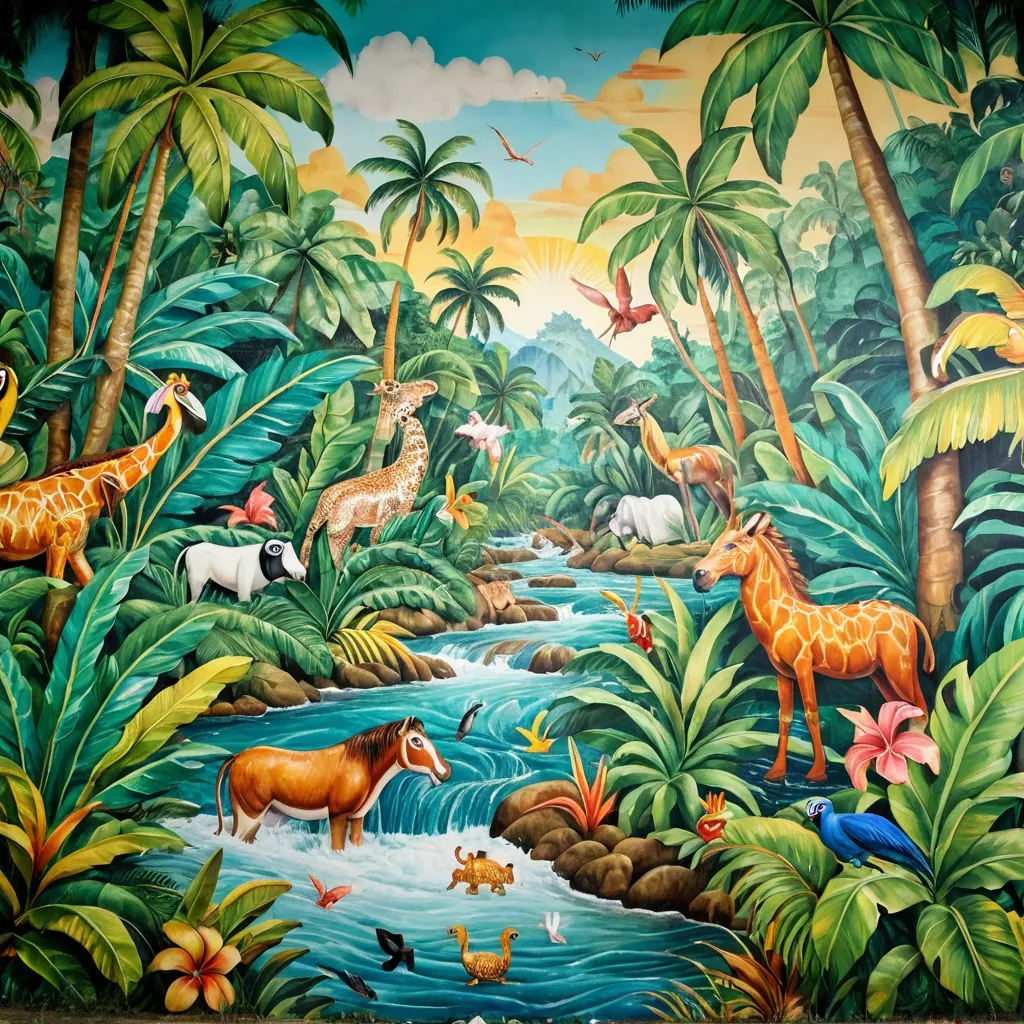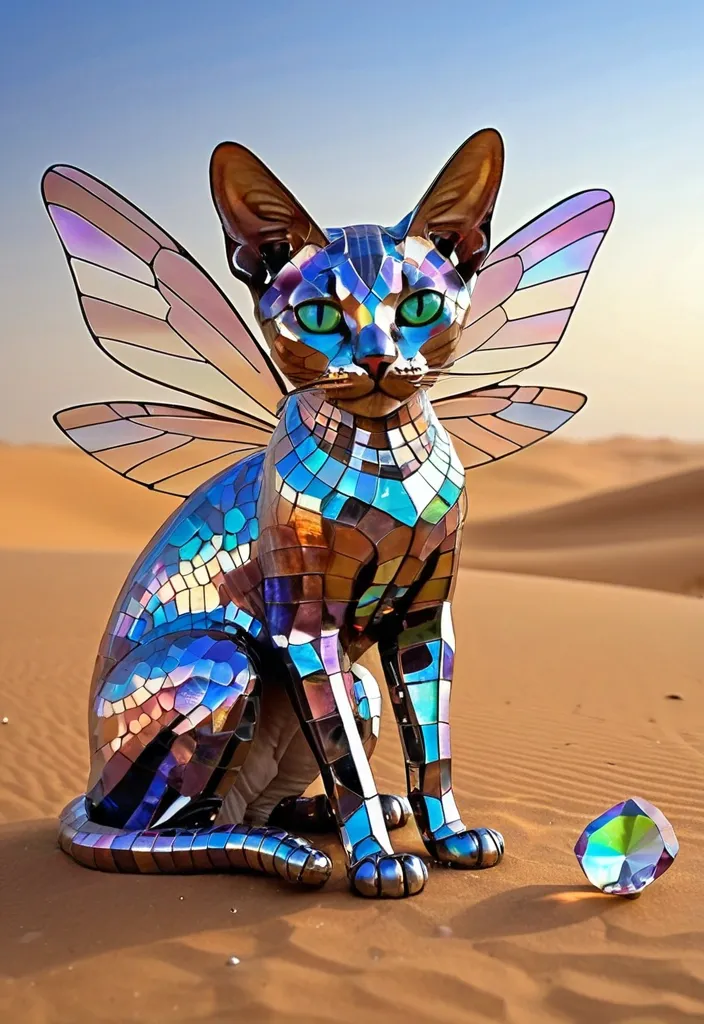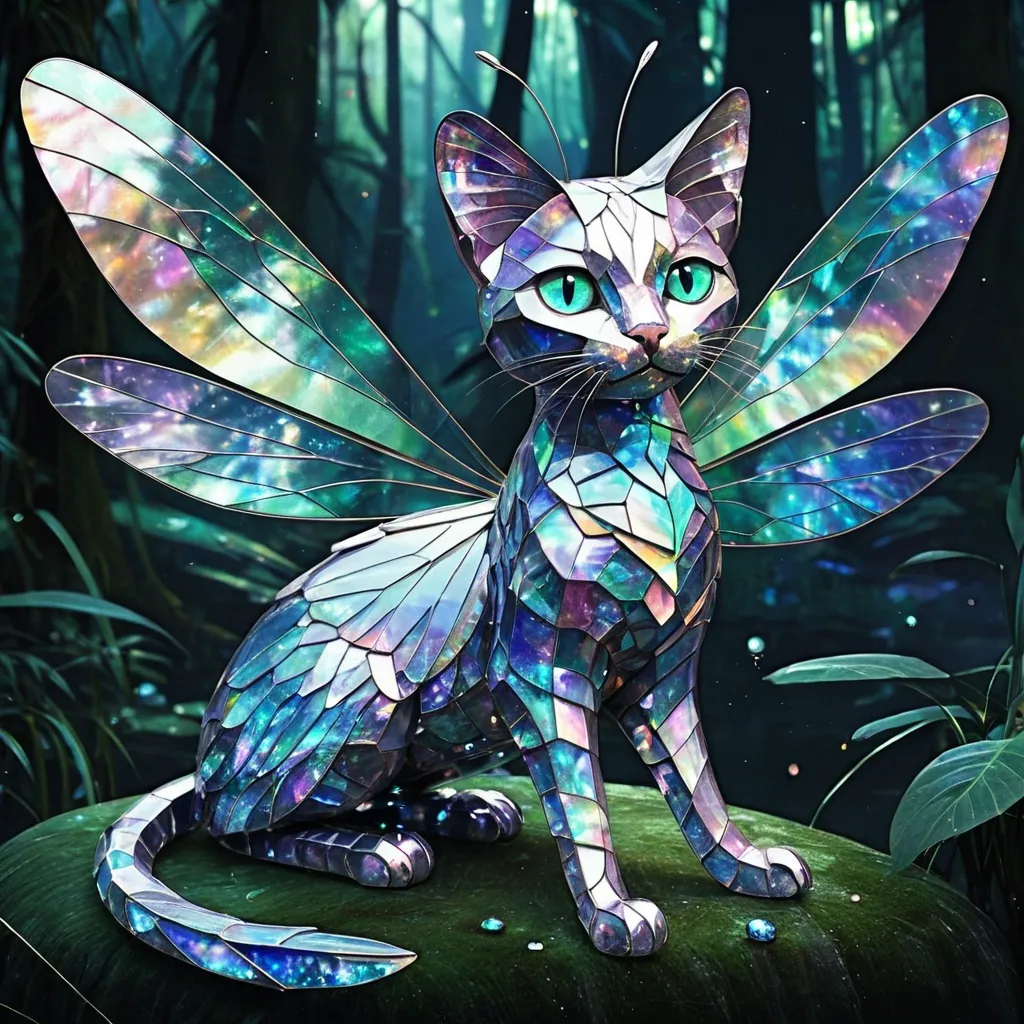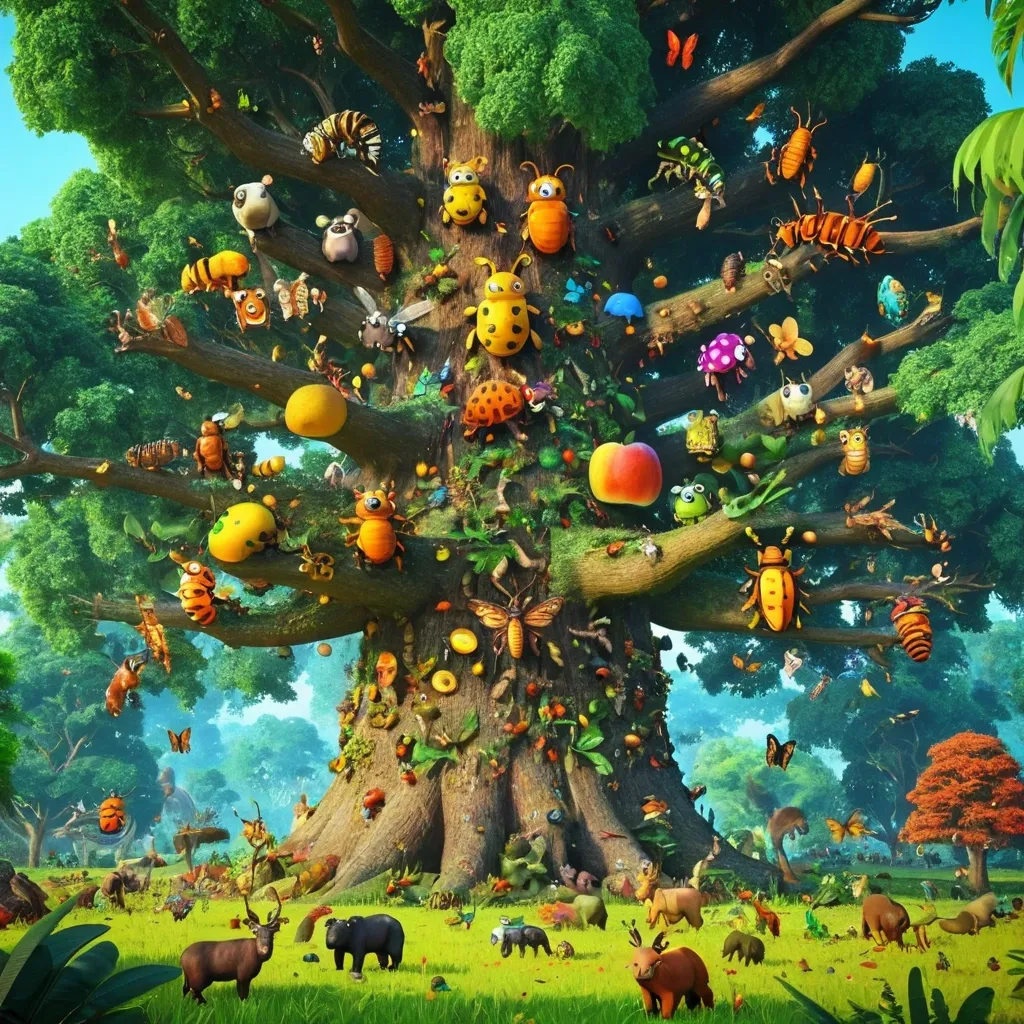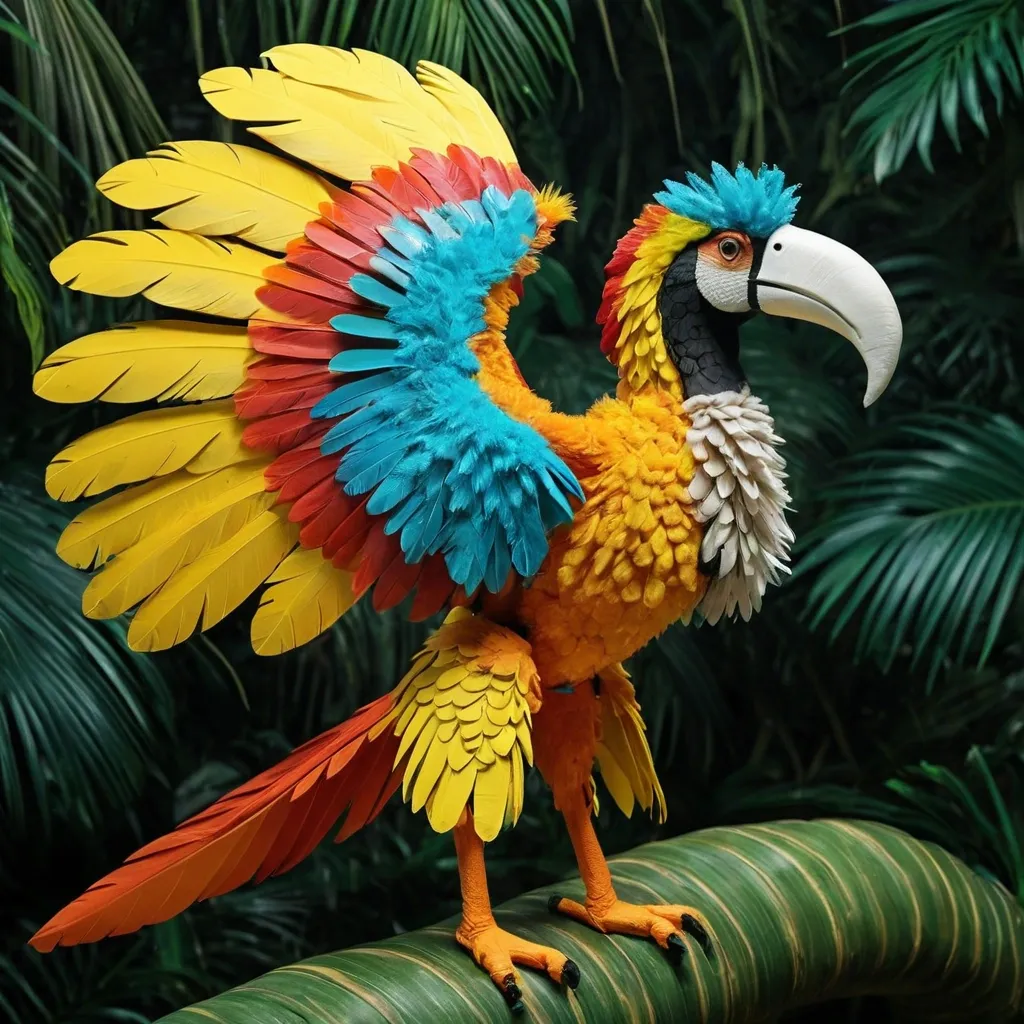AI Image Prompts for Animal
Explore AI generated designs, images, art and prompts by top community artists and designers.

A small child stands close to a brightly lit Christmas tree , positioned on the right side of the scene and facing left , gazing upward with wide , focused eyes. The child wears soft , light-colored pajamas with a gentle printed pattern , the fabric slightly loose and rumpled , suggesting a quiet moment at home. Their posture is upright but cautious , body leaning subtly forward , hands resting near their sides as if resisting the urge to touch. The tree fills the left half of the frame , dense with warm white and multicolored lights that glow softly against the surrounding room. Instead of traditional ornaments , the branches are heavily decorated with plush toys and small character figures in pastel yellows , blues , pinks , and greens , layered thickly from top to bottom. At the base of the tree , a shallow box overflows with additional stuffed animals , spilling outward and crowding the floor with color and soft shapes. The carpet beneath is pale and textured , catching scattered reflections from the lights above. The background recedes gently into soft focus , with hints of furniture and blue-toned walls framing the scene. The atmosphere is intimate and hushed , defined by warmth , proximity , and the suspended moment just before movement , where curiosity holds perfectly still. ,

Hyper realistic portrait of a tribal warrior woman with an intense , piercing gaze and emerald green eyes that shine like gemstones. Her face is adorned with ritual paint in black and red tones , featuring geometric patterns and runic symbols that evoke ancestral power. Her hair is braided and interwoven with metallic rings , and she wears a fur-textured crown or headdress resembling wolf or fox pelt , reinforcing her connection to nature and her spirit animal. The lighting highlights the makeup details and skin texture , creating a dramatic and mystical atmosphere. The background is dark and blurred , drawing full attention to her face , which radiates strength , wisdom , and determination. Artistic style: magical realism with influences from Nordic tribal art and epic cinematography. ,

A modern , minimalist logo for a fintech bank named "VECTOR". The design should be based on a stylized , geometric letter "V". The left side of the "V" should be a solid , stable vertical line , symbolizing a foundation. The right side should be a dynamic , upward-slanting diagonal line , creating a sense of growth and direction. Combine these elements into a single , cohesive , and elegant abstract mark. On a white background use a deep , trustworthy blue (#0F2B5B) as the primary color , with an option to add a vibrant orange gradient (#FF7A00 to #FFB800) as an accent on the diagonal line to symbolize energy. The style is clean , professional , and sleek , suitable for a digital-first financial institution. No icons of coins , globes , or animals. --style raw --v 6.0 ,

A modern , minimalist logo for a fintech bank named "VECTOR". The design should be based on a stylized , geometric letter "V". The left side of the "V" should be a solid , stable vertical line , symbolizing a foundation. The right side should be a dynamic , upward-slanting diagonal line , creating a sense of growth and direction. On a white background use a deep , trustworthy blue (#0F2B5B) as the primary color , with an option to add a vibrant orange gradient (#FF7A00 to #FFB800) as an accent on the diagonal line to symbolize energy. The style is clean , professional , and sleek , suitable for a digital-first financial institution. No icons of coins , globes , or animals. --style raw --v 6.0 ,

A modern , minimalist logo for a fintech bank named "VECTOR". The design should be based on a stylized , geometric letter "V". The left side of the "V" should be a solid , stable vertical line , symbolizing a foundation. The right side should be a dynamic , upward-slanting diagonal line , creating a sense of growth and direction. Combine these elements into a single , cohesive , and elegant abstract mark. On a white background use a deep , trustworthy blue (#0F2B5B) as the primary color , with an option to add a vibrant orange gradient (#FF7A00 to #FFB800) as an accent on the diagonal line to symbolize energy. The style is clean , professional , and sleek , suitable for a digital-first financial institution. No icons of coins , globes , or animals. --style raw --v 6.0 ,

A modern , minimalist logo for a fintech bank named "VECTOR". The design should be based on a stylized , geometric letter "V". The left side of the "V" should be a solid , stable vertical line , symbolizing a foundation. The right side should be a dynamic , upward-slanting diagonal line , creating a sense of growth and direction. Combine these elements into a single , cohesive , and elegant abstract mark. Use a deep , trustworthy blue (#0F2B5B) as the primary color , with an option to add a vibrant orange gradient (#FF7A00 to #FFB800) as an accent on the diagonal line to symbolize energy. The style is clean , professional , and sleek , suitable for a digital-first financial institution. No icons of coins , globes , or animals. --style raw --v 6.0 ,

A breathtaking , surreal Sci-fi landscape featuring a tiny , high-tech industrial robot assembly animal with multiple articulated arms standing on a slope covered in bioluminescent cyan and emerald alien vegetation. The industrial robot gazes up in awe at a colossal , swirling planetary nebula vortex that consumes the entire sky. The sky texture is hypnotic and fluid , resembling marbling oil paint mixed with cosmic gas , glittering stars , and indigo-violet dust spiraling into a dimensional rift. Style: Celestial , ethereal , abstract , digital art smoking: Dramatic backlighting , bright glowing particles , contrasting dark background Composition: dynamic diagonal composition , upward gaze Details: Sparkling white waves and smoke , streaking white light trails , sense of movement and wonder , magical atmosphere Quality: High detail , 4K , Masterpiece , Rendered in Octane. ,

Hyper-realistic 3D cube-shaped diorama of Narmada valley view form drone , near Kevadia in the state of Gujarat , India , carved out with exposed soil cross-section beneath showing rocks , roots , and earth layers. Above: whimsical flowers garden , animal-zoo , Cactus Garden , River Rafting , dam over Narmada river between mountains , and Statue of Unity is the world's tallest statue (Indian politician and independence activist Sardar Patel) , with one open side revealing miniature streets , famous buildings , vehicles , and street life. Use stylized PBR materials , soft global lighting , and a calm pastel color palette. Include volumetric clouds floating around the cube and subtle weather FX that match the city’s current conditions. Add a small title plaque on the front face reading “Statue Of Unity”. ,

A whimsical and detailed illustration of three anthropomorphic forest animals sitting at a wooden table playing cards in a cozy woodland cabin. A large bear sits on one side , holding his cards with a furrowed brow and glaring angrily at his hand. Opposite him , a clever-looking fox smirks mischievously while holding her cards and glancing sideways at the bear. Next to her , a nervous-looking rabbit clutches his cards tightly , his wide eyes staring fearfully at the fox. The table is cluttered with cards and wooden mugs , and the warm cabin is lit by a glowing lantern. Expressive characters , cozy lighting , cartoonish but rich detail , 16:9 aspect ratio. ,

A whimsical and detailed illustration of three anthropomorphic forest animals sitting at a wooden table playing cards in a cozy woodland cabin. A large bear sits on one side , holding his cards with a furrowed brow and glaring angrily at his hand. Opposite him , a clever-looking fox smirks mischievously while holding her cards and glancing sideways at the bear. Next to her , a nervous-looking rabbit clutches his cards tightly , his wide eyes staring fearfully at the fox. The table is cluttered with cards and wooden mugs , and the warm cabin is lit by a glowing lantern. Expressive characters , cozy lighting , cartoonish but rich detail ,

A cinematic black-and-white scene set in a desolate wasteland covered with the corpses of dead animals. The main character , a dark and shadowy crow , stands fully visible on top of an animal’s body , appearing sorrowful and contemplative. The atmosphere is bleak , melancholic , and emotionally heavy. Cinematic lighting with deep contrast and dramatic shadows enhances the somber mood , creating a haunting and emotional visual tone. ,
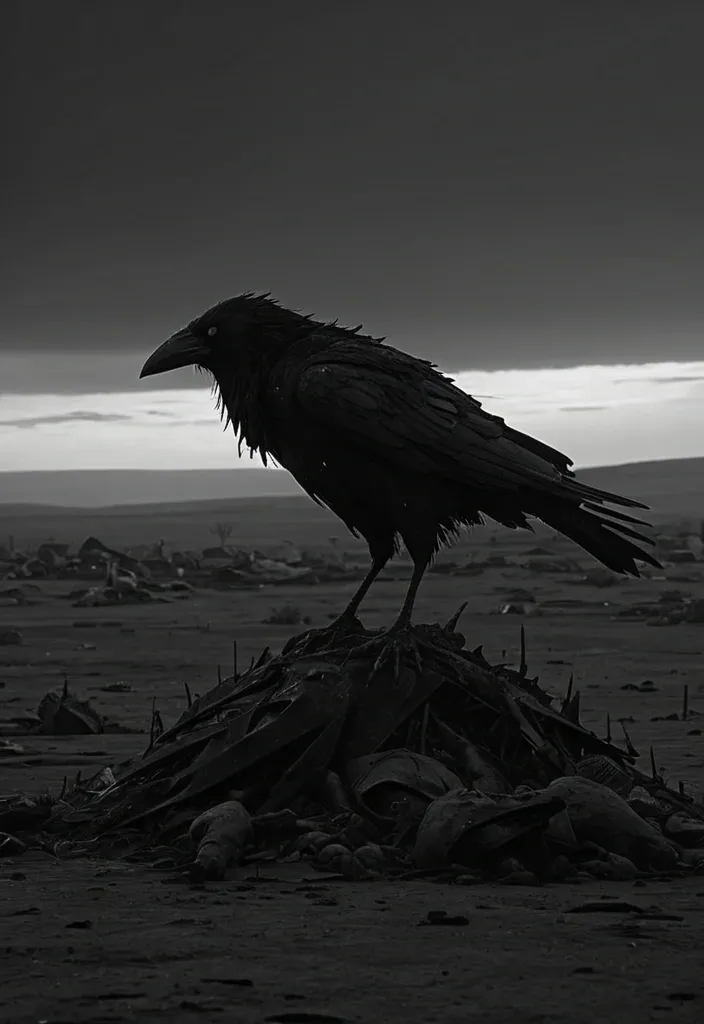
A cinematic black-and-white scene set in a desolate wasteland covered with the corpses of dead animals. The main character , a dark and shadowy crow , stands fully visible on top of an animal’s body , appearing sorrowful and contemplative. The atmosphere is bleak , melancholic , and emotionally heavy. Cinematic lighting with deep contrast and dramatic shadows enhances the somber mood , creating a haunting and emotional visual tone. ,
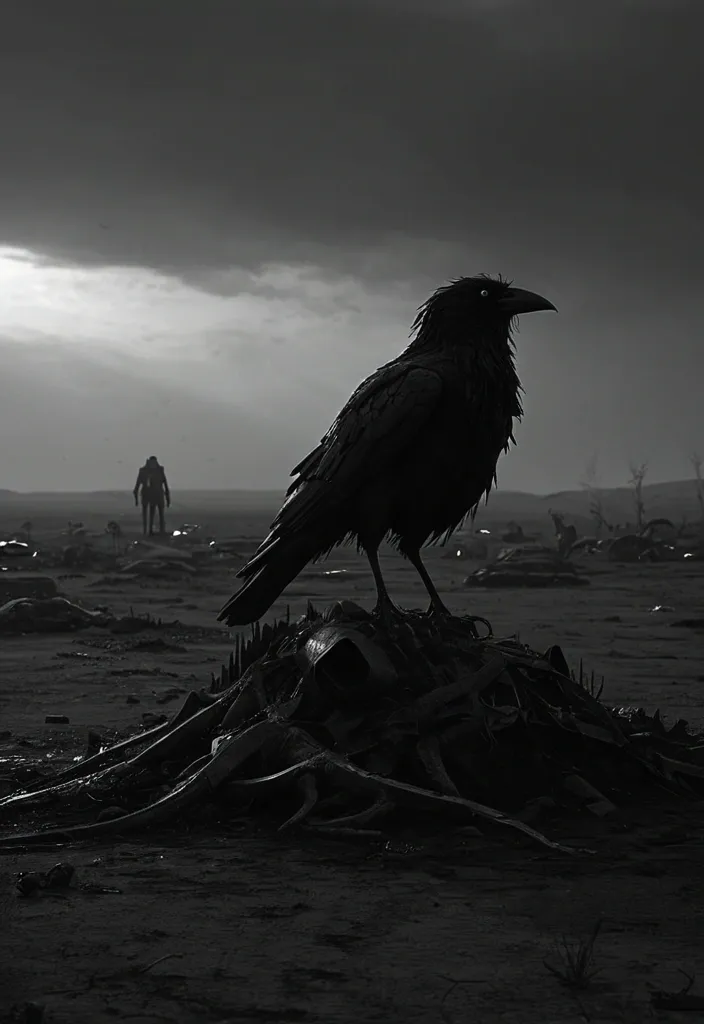
A cinematic black-and-white scene set in a desolate wasteland covered with the corpses of dead animals. The main character , a dark and shadowy crow , stands fully visible on top of an animal’s body , appearing sorrowful and contemplative. The atmosphere is bleak , melancholic , and emotionally heavy. Cinematic lighting with deep contrast and dramatic shadows enhances the somber mood , creating a haunting and emotional visual tone. ,
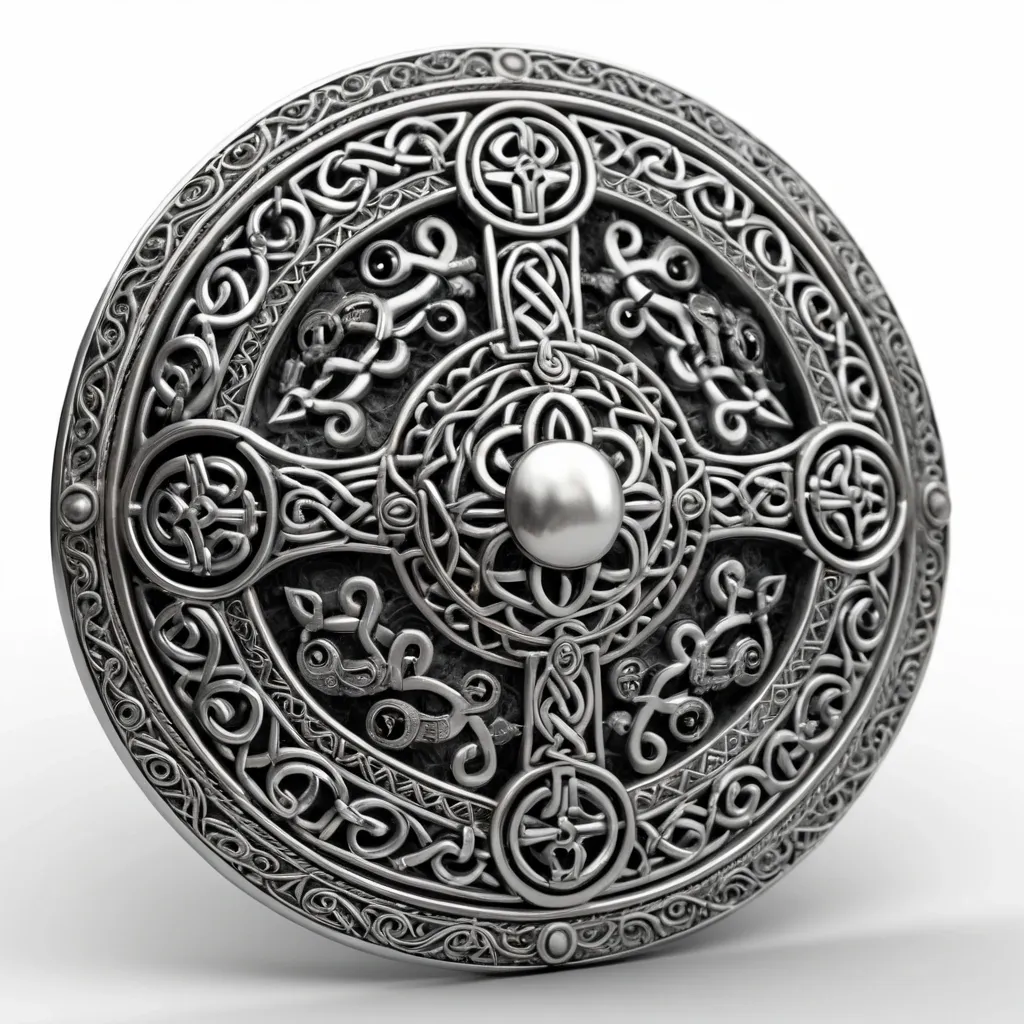
Silver Jewelry 8th C Pictish , ornate brooches and chains with intricate knotwork and animal motifs , finely crafted from polished silver , Style: hyperrealistic with a painterly texture , reminiscent of historical reconstruction art , detailed and atmospheric with subtle depth of field , White or Transparent Background , Full view , Side View , 4K. ,

Generate a Halloween themed picture of a nighttime garden and a house. Process the music video from Jamie Woon - Night Air for image inspiration. Include eerily glowing night plants and animals (for example , insects , bugs , snails). The house has Halloween decorations on the walls , windows , and the front door. Include Jack O' Lanterns , spiderwebs , and glow-in-the-dark objects. ,

A fairy tale book illustration of a book inside a book inside a book. The book is placed on a pedestal in a candle lit library. The pages look like very old tome pages. The pages use the very old illumination technique and design of early Anglo-Saxon scribes and monks (for example , the Domesday Book). The images depict animals. The illuminations are glowing with an ethereal golden-green light. The rays of light reach out from the pages of the book. The scribe standing in front of the pedestal has its back turned to the viewer. The scribe wearing a dirty white linen robe with a huge cloak. There is a quill in the scribe's hand and a pot of glowing golden ink next to the tome. ,

Ilustración de cuento de hadas para niños , estilo acuarela brillante , colores pastel. La princesa y el hada celebrando al amanecer , el bosque iluminado con luces mágicas , animales felices y un dragón el dragon debe ser verde con Morado parecido al de la pelicula de raya de disney volando en el cielo. ,

We have learnt in the earlier grades of Science that the Sun gives us light and heat. It is the primary source of energy for almost everything on Earth. Energy from the Sun provides energy for plants to grow , which , in turn , feeds animals and humans. It also drives water cycles which help in the redistribution of water on the Earth. The Earth works as a connected system where land , water , air , and living things interact closely. Processes such as heating by the Sun , the movement of air , water , and the cycling of essential elements are all linked together. A change in one part of the system often affects the others. These natural processes depend on a balance , and if this balance is disturbed—through overuse of resources , pollution , or climate change—the whole system can be affected in harmful ways. ,

A serene and dreamlike scene depicting a girl with cat-like features (character:1.2) , peacefully sleeping beside a majestic white fox (animal:1.2) on a soft , fluffy cloud (setting:1.2) in a magical sky. The girl has long , flowing black hair with pointed ears , wearing a light blue skirt with layered ruffles and a white fur top (fashion:1.2) , exuding a sense of tranquility. The fox , with its luminous fur and gentle expression , lies protectively beside her. Delicate butterflies (elements:1.2) flutter around them , adding a touch of whimsy. The background should be a gradient of soft blues and whites , with hints of sunlight peeking through (lighting:1.2) , creating a warm and inviting atmosphere. Soft , ethereal lighting accentuates the subjects , emphasizing the softness of the clouds and the comfort of the scene. The overall style should be anime-inspired with vibrant colors and detailed textures (style:1.2) , portraying a fantasy realm. Avoid dark or aggressive elements , ensuring the mood remains peaceful and magical (negative: aggressive , dark). The composition should focus on the bond between the girl and the fox , drawing the viewer's eye to their serene expressions. ,

The Garden of Eden in all its beauty: tall trees with colorful fruits , vibrant flowers , clear rivers flowing gently , birds flying , and animals roaming peacefully. A breathtaking paradise scene. Rendered in a realistic 3D cartoon animation style , with vivid colors , detailed shading , and a serene atmosphere. ,

A futuristic underwater mech engaged in a high-tech Military Armored animal uniquely dolphin shaped , a female pilot sitting in the glass cockpit and drive whose body is covered with glowing circuits and data streams , with a neon-lit water waves in the background. a crystalline jellyfish prominently , surrounded by playful sea creatures , coral , and bubbles , evoking a fun and imaginative atmosphere suitable in the seabed , featuring mutated marine life and advanced diving technology. The holographic interface and complex lines are intertwined , presenting a high-tech sci-fi style. ,
